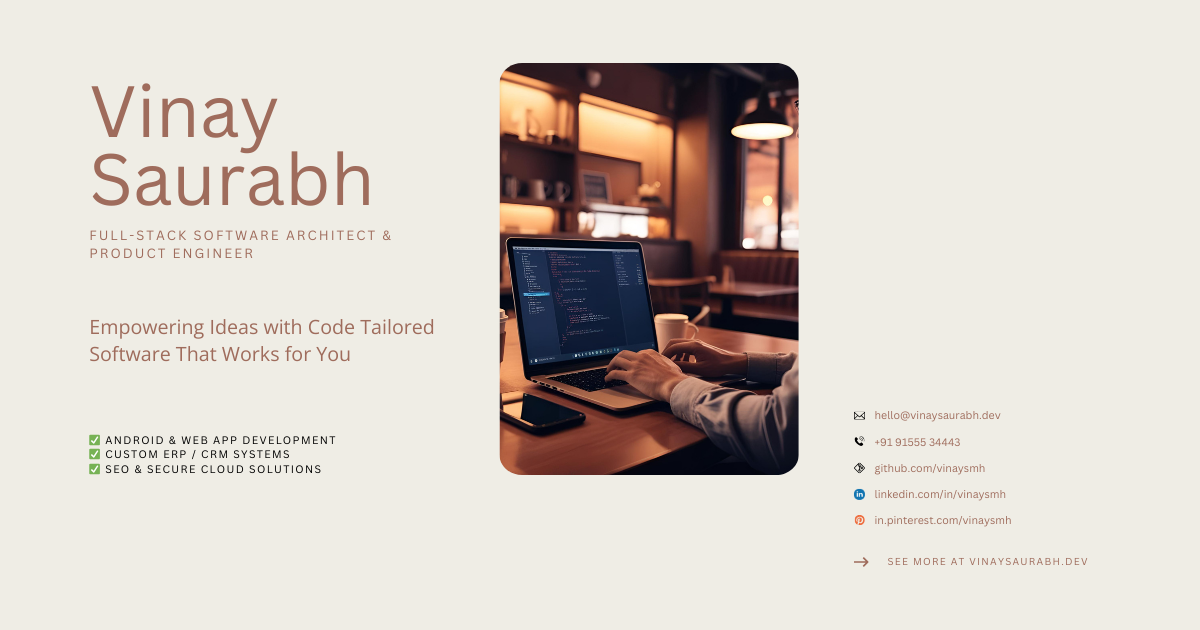Prepare and Publish Your App on Google Play Store
By Vinay Saurabh • Published on
A complete, no-nonsense guide to preparing, signing, designing, and publishing your Android app on Google Play Store the right way, including .jks creation, asset preparation, and writing Play Store listings that convert.

1. Prepare Your App for Release
Clean, minimal, and fully functional
Before you think about publishing, ensure your app has no debug logs, no unnecessary permissions, and is free of unused resources. Run Lint, Proguard/R8 for minification and obfuscation, and remove dev/test configurations to avoid leaking environment secrets. Ensure versionCode and versionName are properly bumped.
2. Creating a .jks Keystore for App Signing
Your digital identity for Android
To sign your APK or AAB, generate a .jks file using:
keytool -genkey -v -keystore yourname-release-key.jks -keyalg RSA -keysize 2048 -validity 10000 -alias your_alias_nameKeep your .jks file, alias, and passwords secure. You will use this keystore every time you release updates to maintain the same signing identity.
3. Preparing Graphics and Logo Assets
Play Store asset dimensions
Your app must have clear, attractive, non-pixelated assets:
- App Icon: 512x512 PNG (max 1MB)
- Feature Graphic: 1024x500 JPG/PNG
- Screenshots: Min 2, max 8 per device type (phone, tablet, etc.), at least 320px wide, max 3840px.
- Optional: Promo video (YouTube URL).
Avoid clutter, use consistent branding, and test legibility at small sizes.
4. Writing Play Store Descriptions
Make your words convert
Your short description (up to 80 characters) should clearly highlight your app’s primary benefit.
Your full description (up to 4000 characters) should:
- Clearly state what your app does.
- List key features in bullet points.
- Use keywords naturally (no stuffing).
- Add a call to action, e.g., 'Download now and improve your productivity.'
Do not use misleading terms like 'Best app ever' unless justified by actual value.
5. Privacy Policy and Terms & Conditions
Build user trust and comply with policies
Create a clear Privacy Policy using generators like iubenda or manually write it if your app uses data. Include:
- What data is collected.
- How it is used.
- Third-party SDK usage.
- Contact details.
Host it on your website or GitHub Pages. Similarly, draft Terms & Conditions outlining acceptable use, disclaimers, and liability limitations. Link these in your Play Console during app listing setup.
6. Uploading to Google Play Console
Structured, secure deployment
- Create a Google Play Developer Account ($25 one-time fee).
- Create a new app, set your app name, default language, and confirm declarations.
- Fill out content rating, pricing, and distribution settings.
- Upload your signed APK/AAB and fill out release notes.
- Submit for review.
Double-check listings, assets, and legal documentation before publishing to avoid mistakes.
7. Post-Publish Checklist
Measure, update, repeat
- Monitor ANRs, crashes, and user reviews on Play Console.
- Update your app regularly to maintain ranking and stability.
- Respond to user reviews professionally to build trust.
- Refine your store listing using Store Listing Experiments if needed.
- Stay compliant with Play Store policies to avoid suspensions or removals.